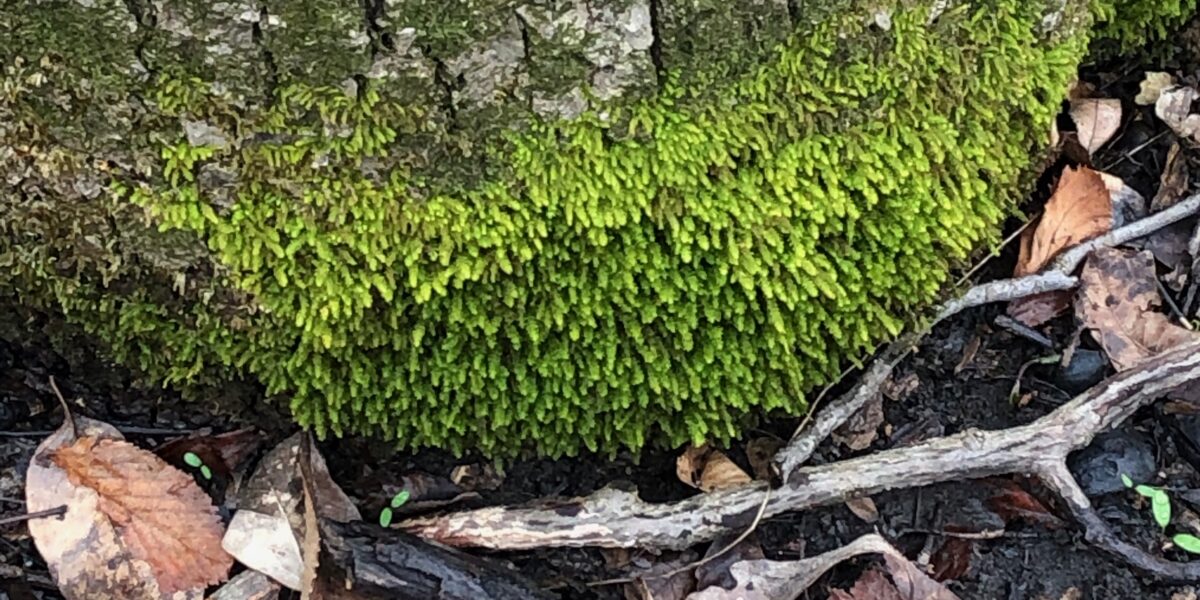A hydrated mat of Anomodon minor growing at the base of an oak in the early spring after a rain.
This is one of four articles on Kansas mosses that first appeared in the Kansas Native Plant Society’s Newsletter, vol. 45, Number 1.
On a rainy day three winters ago I went looking for the winter leaves of the Putty Root orchid in the woods in southern Douglas County. No orchids were found but mosses covering the downed oak logs caught my attention. The more it rained the more the moss stood out on the winter landscape. The rain began to act like it was an all-day affair so started back to the truck. Retracing my steps, I passed a medium-sized oak tree a second time but now it had an amazing mat of bright green moss that I had not seen before. Where did that come from? Finally, it dawned on me. I was looking at a hydrated moss as opposed to the dehydrated moss that I had passed earlier.
It was growing on the north side of the vertical trunk from ground level to about 3-4 feet. This mat practically shimmered in the half-light of a rainy, winter day. Not only that but the mat was almost 2 inches thick. I stood in the rain with my jaw agape trying to figure out how I had ever missed this moss before.
There are several Kansas mosses that you will find growing in the “dog zone” at the base of woodland trees but two stand out. The one that caught my eye on that rainy day was Anomodon minor. It is the more common moss and, is widespread in the eastern half of KS woodlands. A. minor is mostly found on the base of trees. These mosses have a pleurocarp growth form (branching stems) and tend to form carpet-like mats. One of the common names is Tree Skirt moss. Note the blunt tips and tongue-shaped leaves for this Anomodon. Oh, and despite the name suggesting that this is the smallest Anomodon in KS, it is actually the largest.
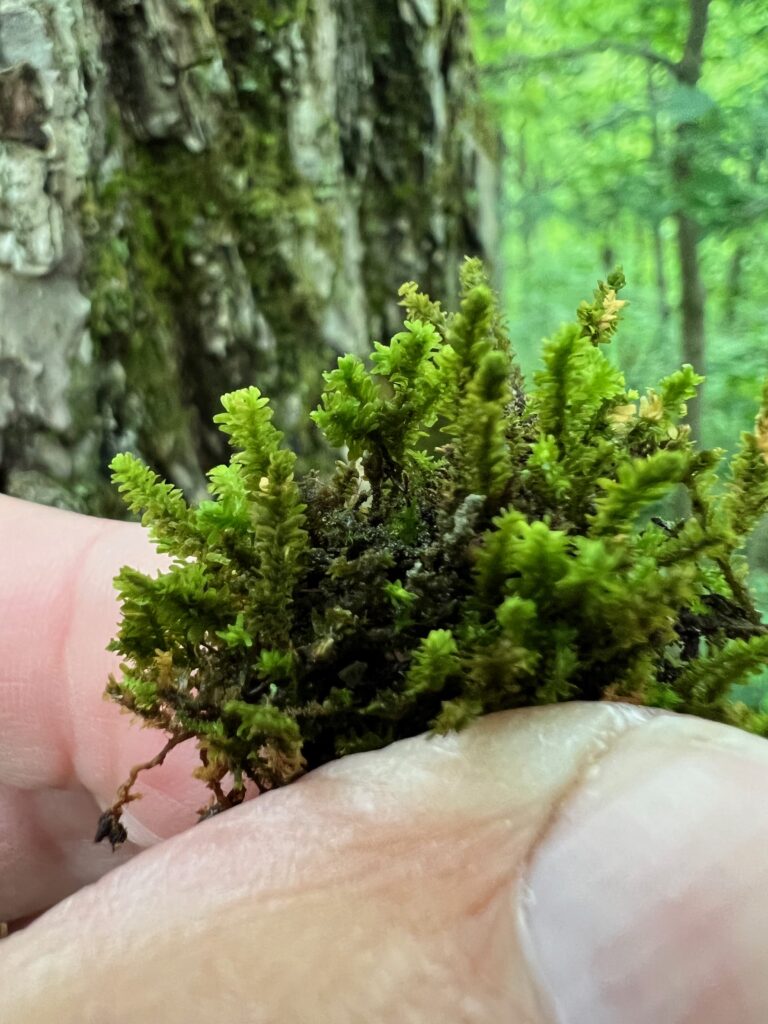
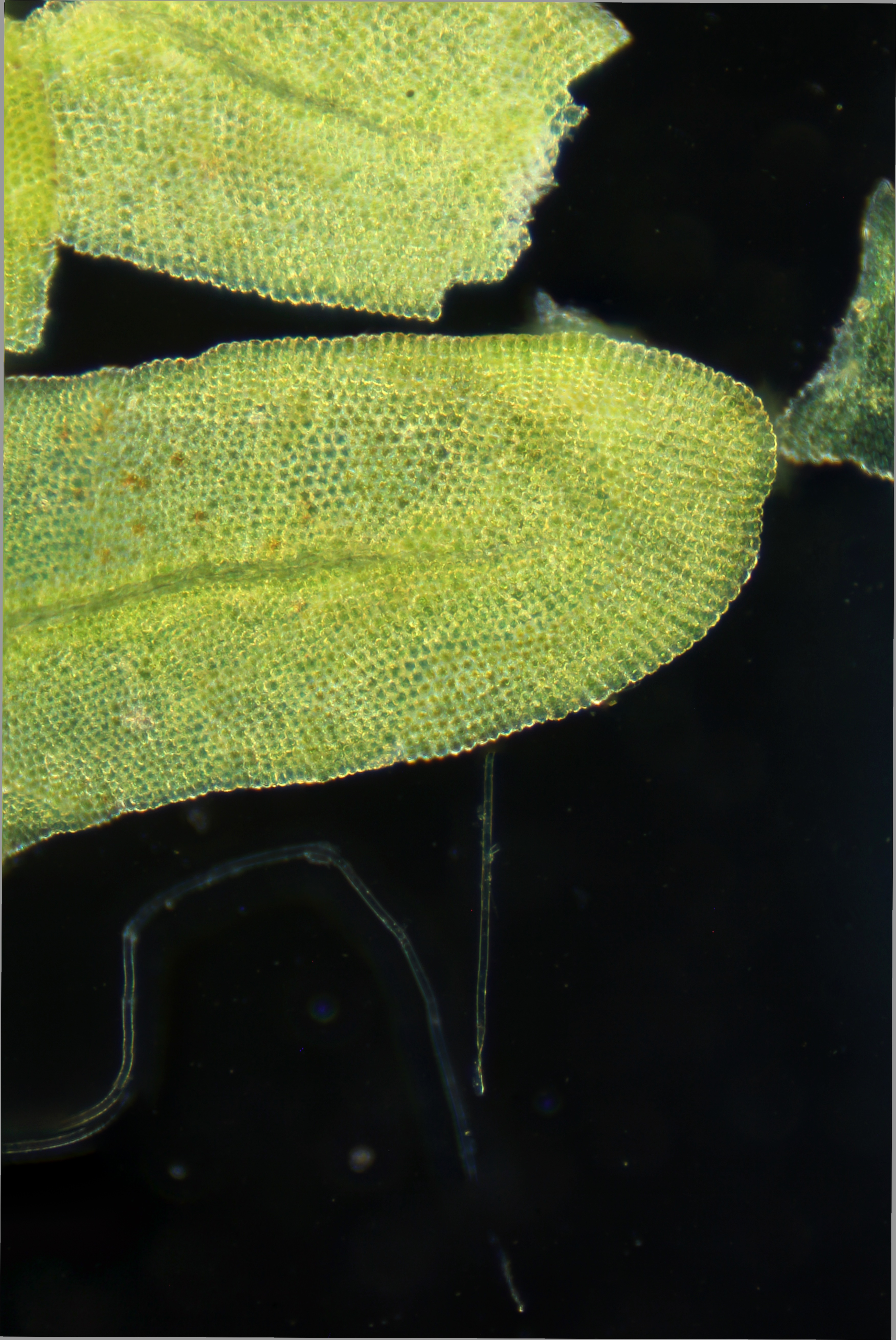
The other fairly common moss in this group is Pseudoanomodon attenuatus (formerly known as Anomodon attenuatus). Its range is the eastern ¼ of KS and it tends to be more common on steep soil banks and rock faces than on trees.
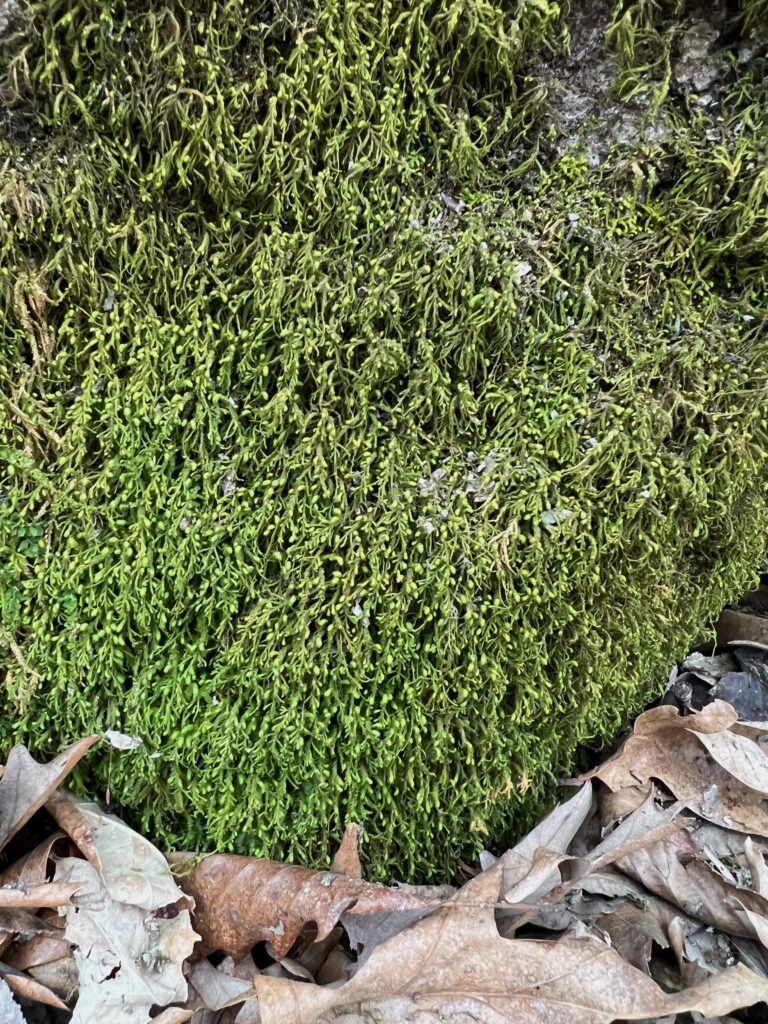
When dry Pseudoanomodon can have two types of distinctive stems: rat tails and club tails. You can see both in this photo. When hydrated the name “attenuatus” becomes clear in that the leaves along the stem get smaller in size as you get near the tip of the stem.
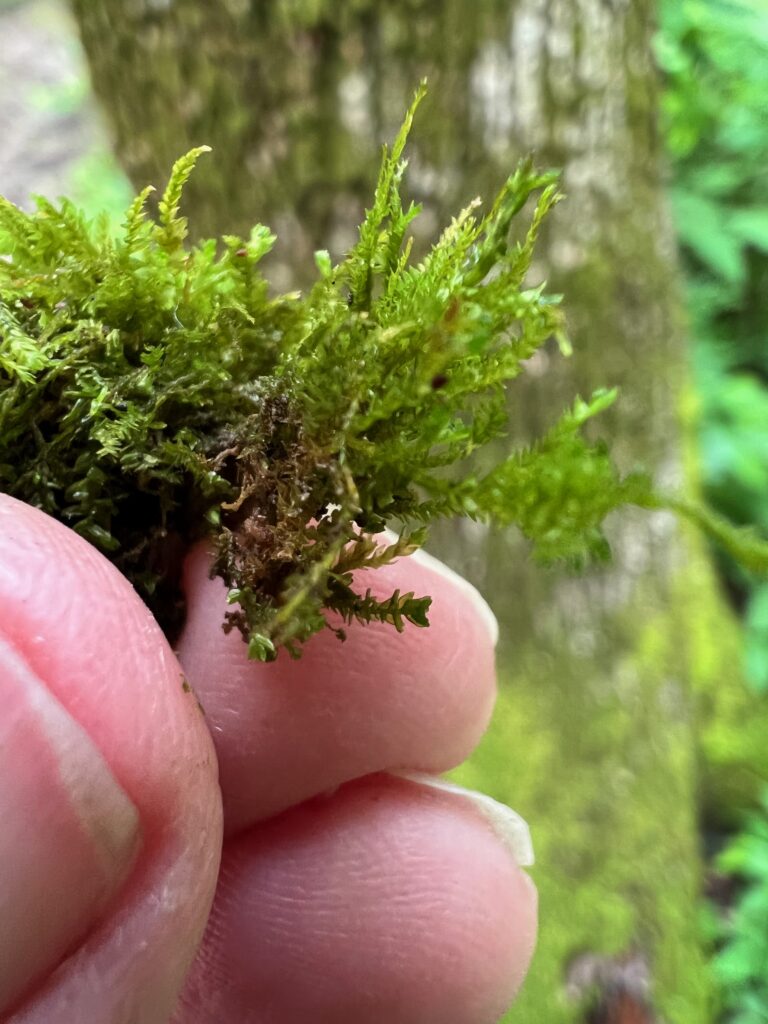
When dry, both mosses shrivel up into a tangled mess but when hydrated I find them to be some of our more spectacular mosses. I understand that not everyone wants to walk in the woods during a winter rain looking for bits of green. Is there an alternative? Indeed there is. Simply pick a beautiful, sunny day (not too cold) for your walk and take along a small spray bottle filled with water. When you get to your moss site simply spray the water on likely candidate mosses and usually within 10 minutes they’ll be well on their way to rehydrating. Here’s a “before and after” photo of a small bunch A. minor growing on a limestone ledge that I sprayed to give you an idea of how well this works.
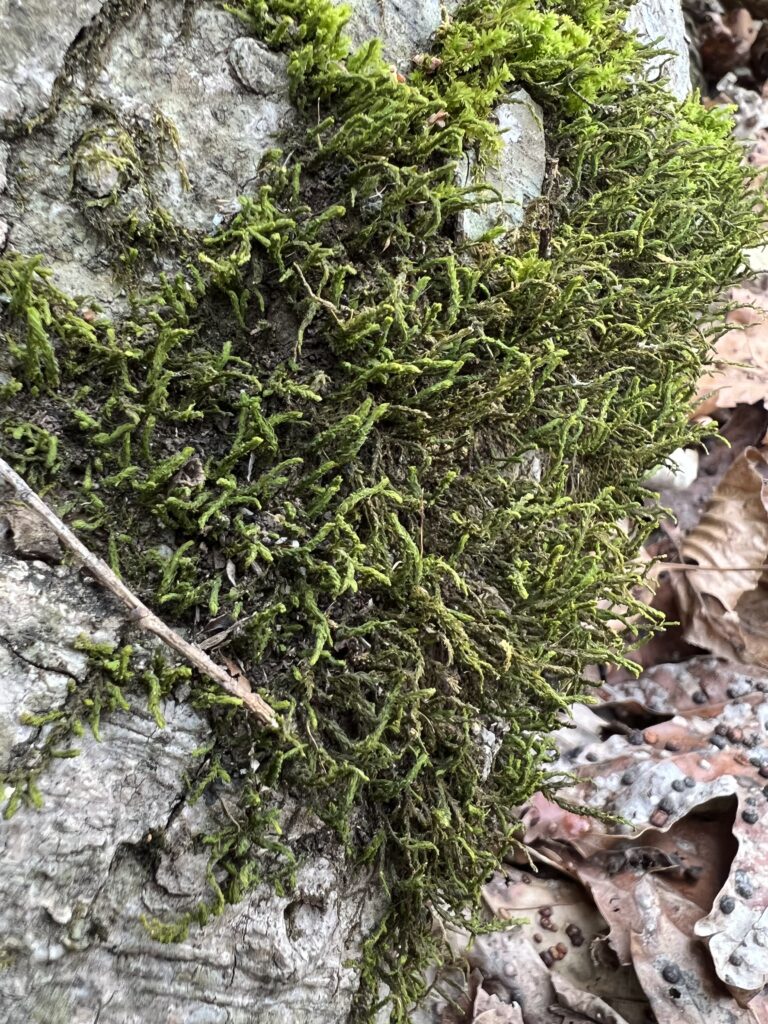
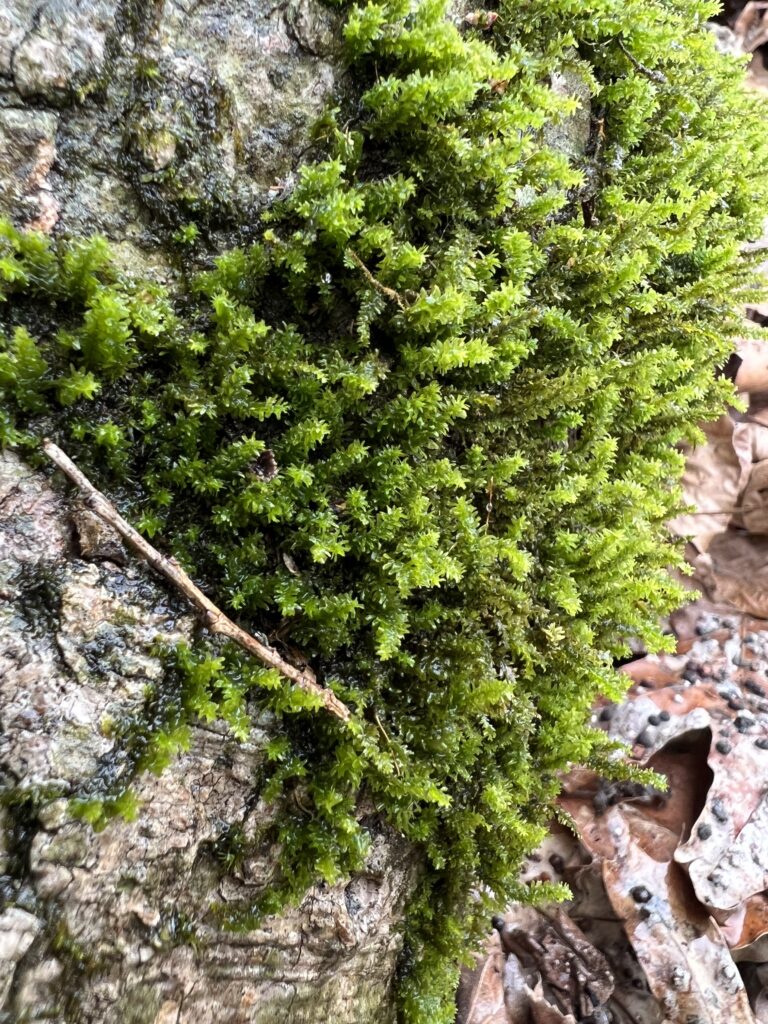
I hope you can find some tree skirt moss this winter. Concentrate your efforts in woods with a good canopy that tends to maintain higher humidity levels. The bottom of ravines and canyons are great places to look. I don’t think I’ve ever noticed one of these mosses growing in early successional stage woods like that that covers a lot of eastern KS. But maybe I haven’t looked hard enough. However, I did find both mosses in the ravines down near Sedan. If you find these mosses please take time to record their location, take some photos, and report your find to the Kansas Native Plant Facebook page.
